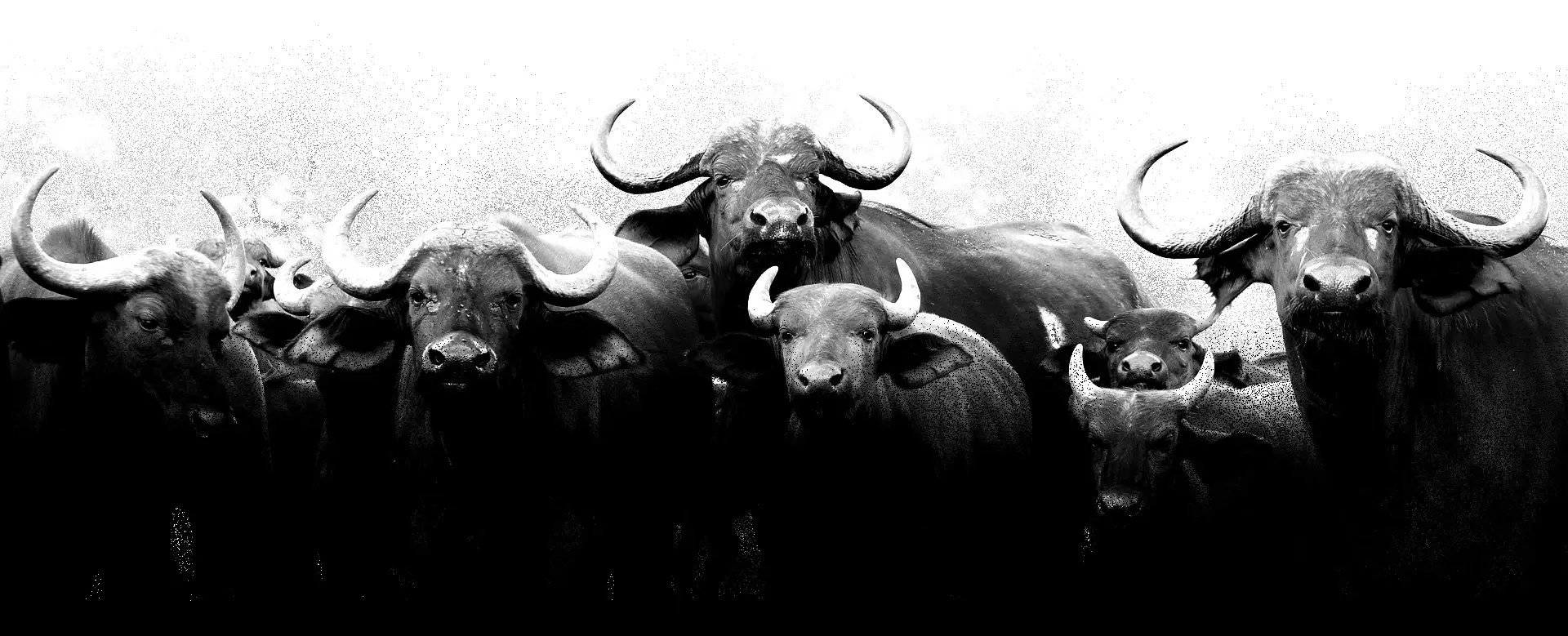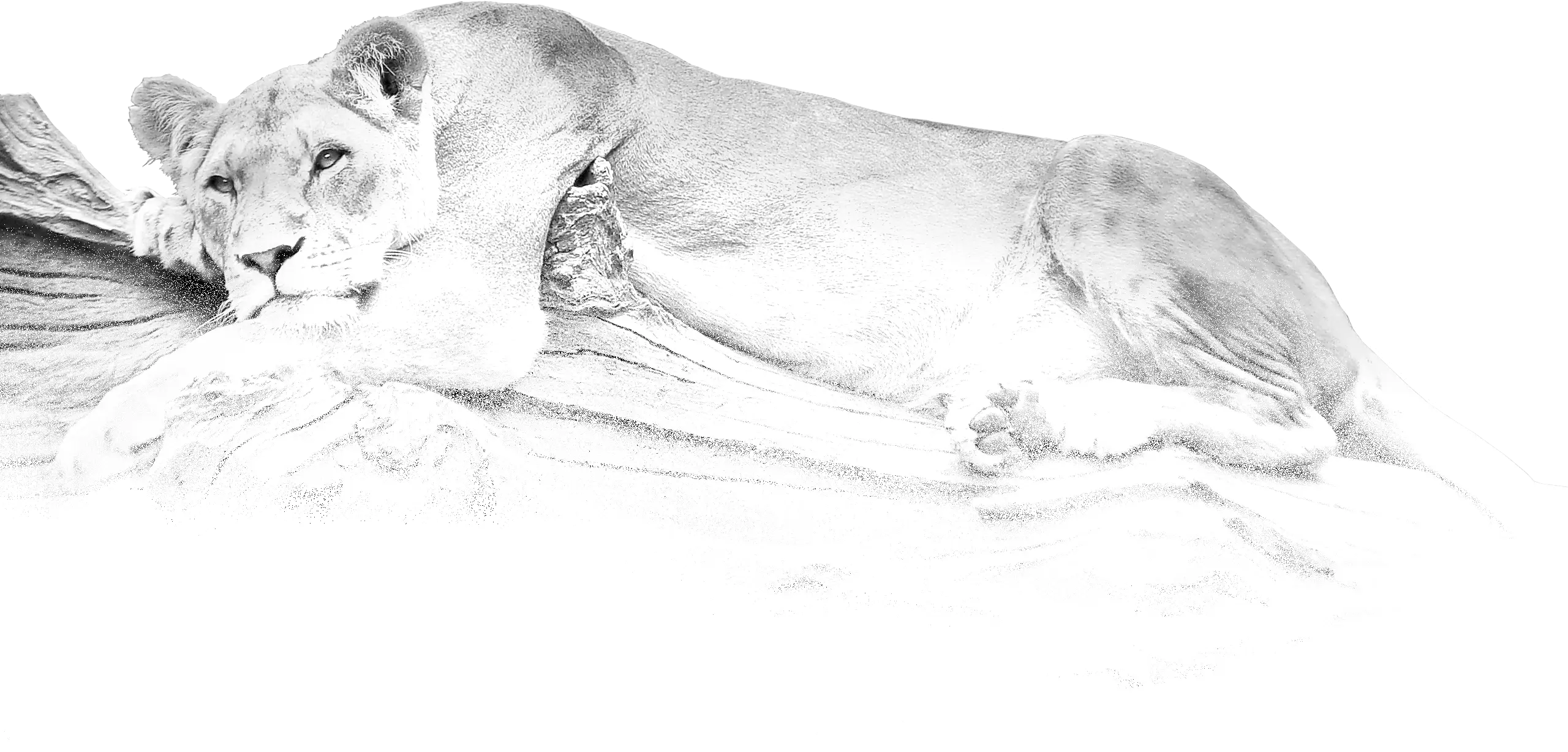
(Hyaenidae)
Hyaenas
Гієнові
Hyenas or hyaenas are feliform carnivoran mammals belonging to the family Hyaenidae. With just four extant species (each in its own genus), it is the fifth-smallest family in the order Carnivora and one of the smallest in the class Mammalia. Despite their low diversity, hyenas are unique and vital components of most African ecosystems.
Although phylogenetically closer to felines and viverrids, hyenas are behaviourally and morphologically similar to canids in several elements due to convergent evolution: both hyenas and canines are non-arboreal, cursorial hunters that catch prey with their teeth rather than claws. Both eat food quickly and may store it, and their calloused feet with large, blunt, nonretractable claws are adapted for running and making sharp turns. However, hyenas’ grooming, scent marking, defecation habits, mating and parental behavior are consistent with the behavior of other feliforms.
Build
Hyenas have relatively short torsos and are fairly massive and wolf-like in build, but have lower hind quarters, high withers and their backs slope noticeably downward towards their rumps. The forelegs are high, while the hind legs are very short and their necks are thick and short. Their skulls superficially resemble those of large canids, but are much larger and heavier, with shorter facial portions. Hyenas are digitigrade, with the fore and hind paws having four digits each and sporting bulging pawpads. Like canids, hyenas have short, blunt, non-retractable claws. Their pelage is sparse and coarse with poorly developed or absent underfur. Most species have a rich mane of long hair running from the withers or from the head. With the exception of the spotted hyena, hyaenids have striped coats, which they likely inherited from their viverrid ancestors. Their ears are large and have simple basal ridges and no marginal bursa. Their vertebral column, including the cervical region are of limited mobility. Hyenas have no baculum. Hyenas have one more pair of ribs than canids do, and their tongues are rough like those of felids and viverrids. Males in most hyena species are larger than females, though the spotted hyena is an exception, as it is the female of the species that outweighs and dominates the male. Also, unlike other hyenas, the female spotted hyena’s external genitalia closely resembles that of the male.
Behavior
Hyenas groom themselves often like felids and viverrids, and their way of licking their genitals is very cat-like (sitting on the lower back, legs spread with one leg pointing vertically upward). They defecate in the same manner as other Carnivora, though they never raise their legs as canids do when urinating, as urination serves no territorial function for them. Instead, hyenas mark their territories using their anal glands, a trait found also in viverrids and mustelids, but not canids and felids. When attacked by lions or dogs, striped and brown hyenas will feign death, though the spotted hyena will defend itself ferociously. The spotted hyena is very vocal, producing a number of different sounds consisting of whoops, grunts, groans, lows, giggles, yells, growls, laughs and whines. The striped hyena is comparatively silent, its vocalizations being limited to a chattering laugh and howling.
Mating between hyenas involves a number of short copulations with brief intervals, unlike canids, who generally engage in a single, drawn out copulation. Spotted hyena cubs are born almost fully developed, with their eyes open and erupting incisors and canines, though lacking adult markings. In contrast, striped hyena cubs are born with adult markings, closed eyes and small ears. Hyenas do not regurgitate food for their young and male spotted hyenas play no part in raising their cubs, though male striped hyenas do so.
The striped hyena is primarily a scavenger, though it will also attack and kill any animals it can overcome, and will supplement its diet with fruit. The spotted hyena, though it also scavenges occasionally, is an active pack hunter of medium to large sized ungulates, which it catches by wearing them down in long chases and dismembering them in a canid-like manner. Spotted hyenas may kill as many as 95% of the animals they eat.
The aardwolf is primarily an insectivore, specialised for feeding on termites of the genus Trinervitermes and Hodotermes, which it consumes by licking them up with its long, broad tongue. An aardwolf can eat 300,000 Trinervitermes on a single outing.
Except for the aardwolf, hyenas are known to drive off larger predators, like lions, from their kills, despite having a reputation in popular culture for being cowardly. Hyenas are primarily nocturnal animals, but sometimes venture from their lairs in the early-morning hours. With the exception of the highly social spotted hyena, hyenas are generally not gregarious animals, though the striped and brown hyenas may live in family groups and congregate at kills.
Spotted hyenas are one of the few mammals other than bats known to survive infection with rabies virus and have shown little or no disease-induced mortality during outbreaks in sympatric carnivores, in part due to the high concentration of antibodies present in their saliva. Despite this perceived unique disease resistance, little is known about the immune system of spotted hyenas, and even less is known about other Hyaenidae species.
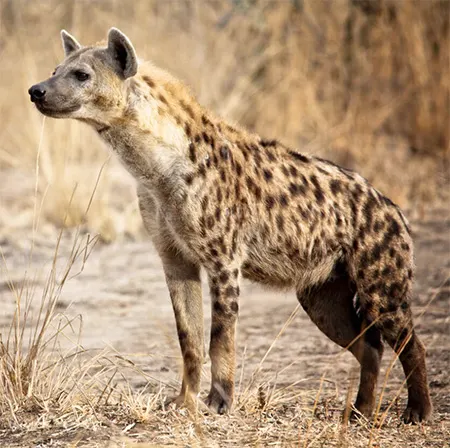
(Crocuta crocuta)
Spotted Hyena
Гієна плямиста
It is widespread in Africa and occurs in almost all open habitats south of the Sahara, including semi-deserts, savannas, woodlands, dense dry forests, and even montane regions at elevations up to 4,100 m.
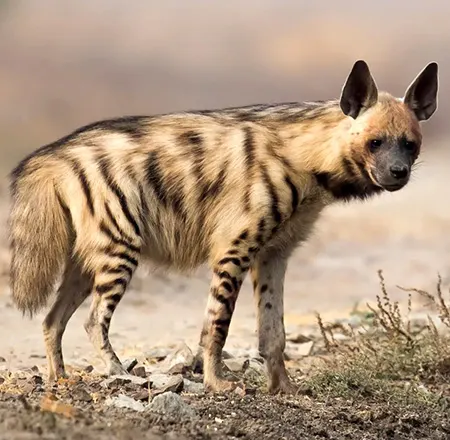
(Hyaena hyaena)
Striped Hyena
Гієна смугаста
It has a fairly large, though fragmented, range that spans northern and eastern Africa, the Middle East, the Arabian Peninsula, Turkey, the Caucasus, Central Asia, India, and Nepal. Throughout most of its range, it inhabits arid or semi-arid open areas, often characterized by sparse shrubland.
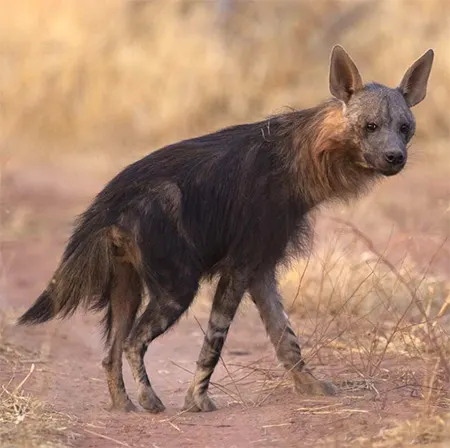
(Parahyaena brunnea)
Brown Hyena
Гієна бура
It inhabits desert areas, semi-desert, and open woodland savannas in southern Africa, including Angola, Botswana, Lesotho, Mozambique, Namibia, South Africa, and Zimbabwe.
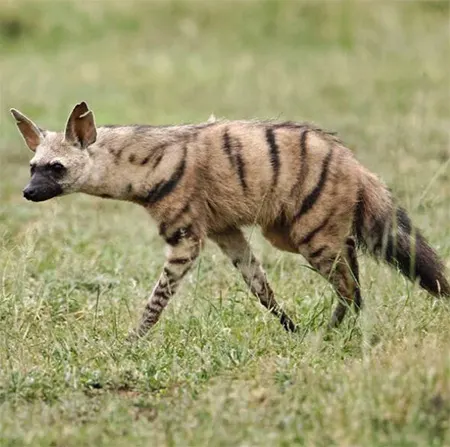
(Proteles cristatus)
Aardwolf
Земляний вовк
There are two distinct populations: one in Southern Africa, and another in East and Northeast Africa. It lives in open, dry plains and bushland, avoiding mountainous areas.
